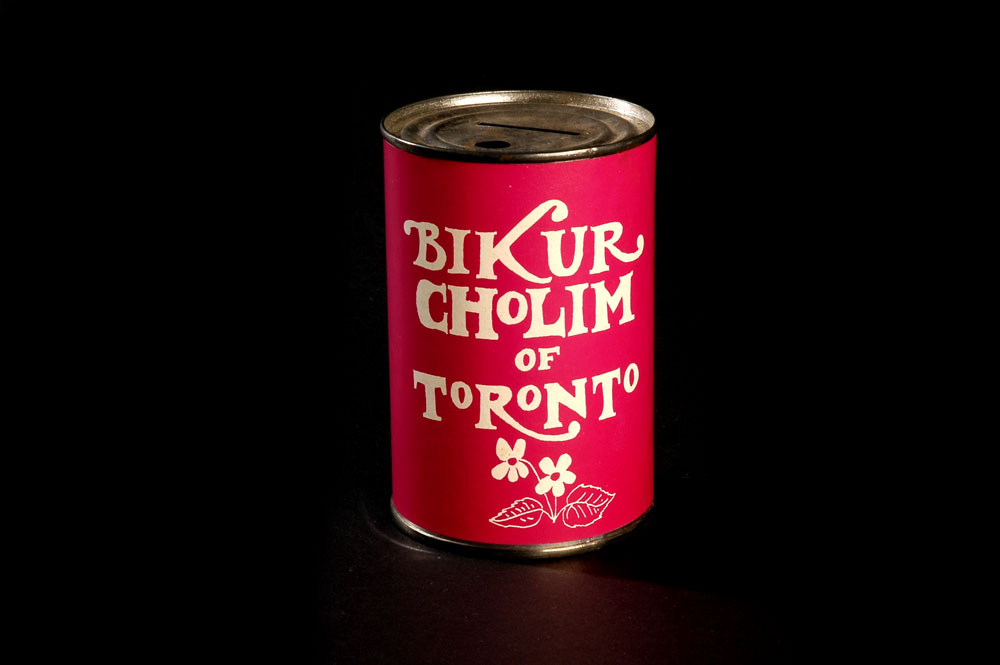Gallery
April 25, 2024
to September 23, 2024
An exhibition mining one family’s experiences and archival treasures to explore the little known story of Jewish life in northern Ontario by Toronto-based artist Meichen Waxer.

Tzedakah, the Hebrew word for charity, is an important part of Jewish life. The Talmud describes the act of giving tzedakah as “equal to all the other commandments combined” (Bava Bathra 9b). Tzedakah comes in many forms: from feeding the hungry and clothing the poor, to visiting the sick and burying the dead. The most commonly recognized form is giving monetary donations through tzedakah boxes or pushkes, the Yiddish word for box or can.
A selection of historic tzedakah boxes from the holdings of the Ontario Jewish Archives and Beth Tzedec Reuben and Helene Dennis Museum can be seen in this exhibit. The boxes date from the 1920s to the 1980s and represent a variety of charities that collect funds to support Israel, the Old Country, and local causes. They illustrate the different charities and types of pushkes used over time by Jews in Ontario and abroad.
Tzedakah boxes are found in homes, synagogues, Hebrew schools, community centres, and places of business so that everyone has access to the mitzvah or good deed. Traditionally, families come together before lighting the candles on Shabbat and Jewish holidays and drop coins into the boxes. Donations are often given in honour of a happy occasion or simcha like a Bar Mitzvah or wedding, and are also given in times of mourning in memory of someone who has passed away.
Although a tzedakah box can vary in form from a coffee can to an artistic object, the concept of ‘hidur mitzvah’, ‘beautifying the mitzvah,’ underlies the tradition of creating tzedakah boxes that are works of art in themselves, exhibited in museums and treasured by collectors. Artisans and trades people skillfully crafted pushkes for their community, using materials such as wood, silver, brass, copper and tin. Through the decades, with better technology, factories began manufacturing charity boxes using graphics, text, colour and new materials like plastic and cardboard. In spite of the advent of the mass-produced tzedakah box, artists have continued to design their own versions of pushkes, using a creative variety of materials, styles and themes.
Beth Tzedec Reuben and Helene Dennis Museum
Access Anytime
Virtual